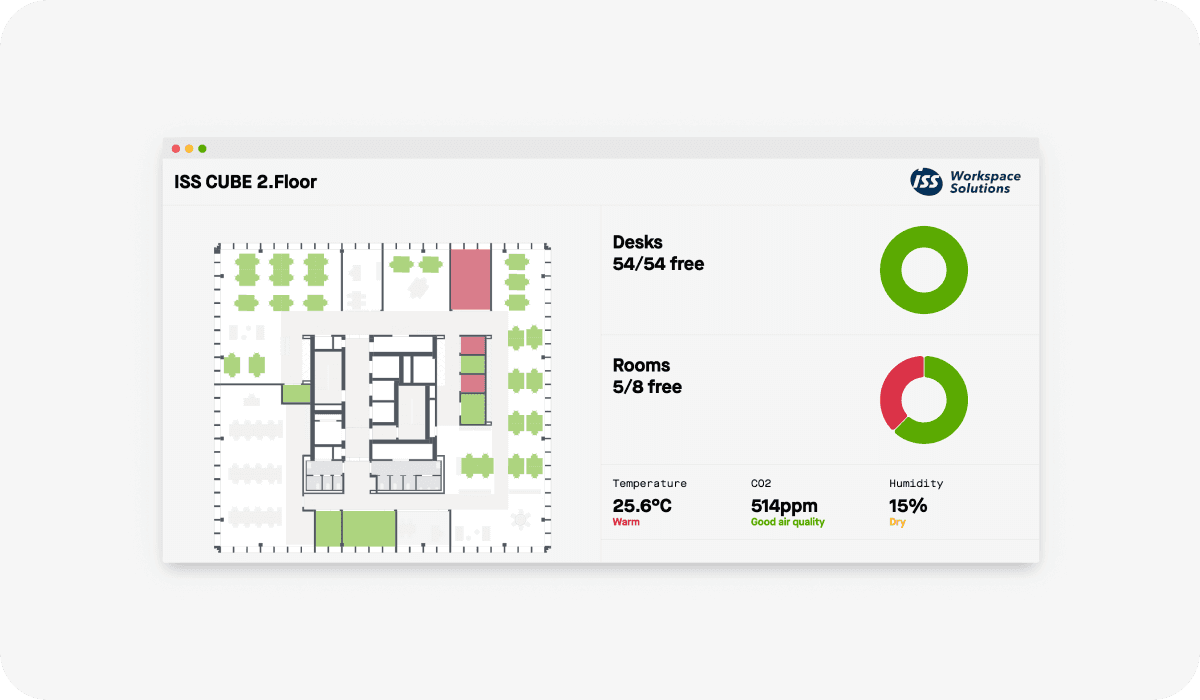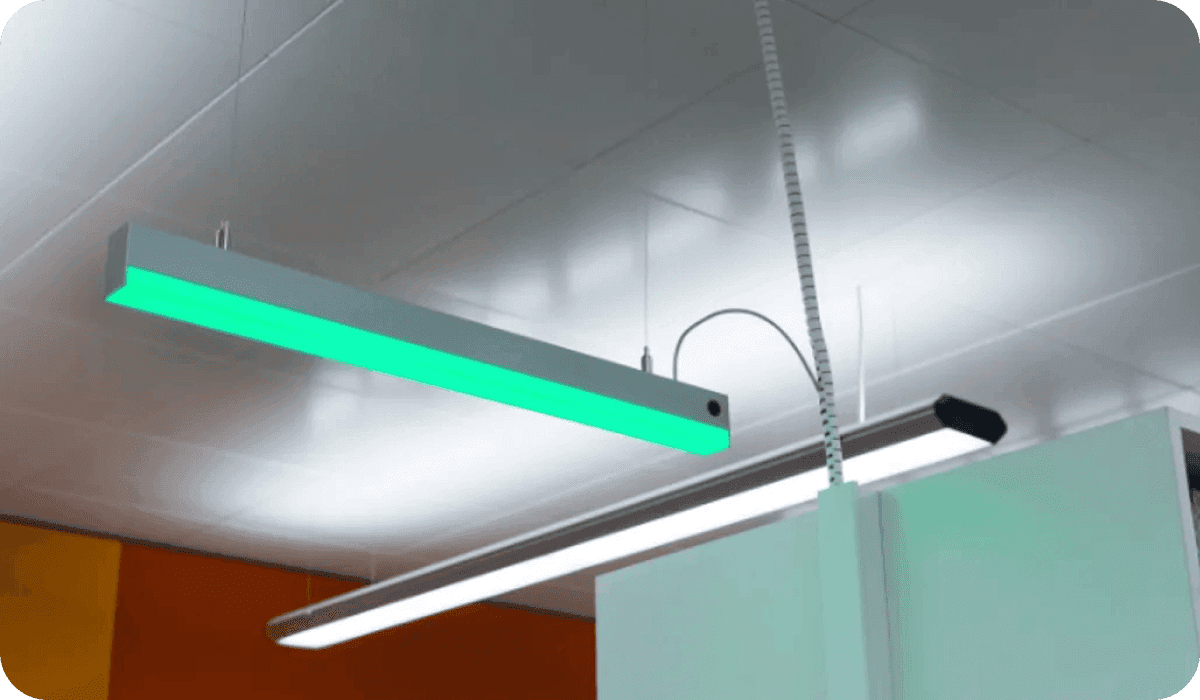Apr 13, 2021
Are smart lighting solutions worth it?
Alexis Leibbrandt
Although the smart lighting market has a forecasted CAGR of 22% from 2019 to 2026, many are still hesitant to invest in IoT solutions. This article offers an insight into the current situation, trends and current application examples of smart lighting solutions and what role it plays in indoor- and outdoor IoT applications, offering optimization and efficiency in every aspect, well-being, energy, habits, and space.
Smart lighting market and trends (Data Bridge, 2019)
Energy-efficient lighting solutions have become increasingly popular across the globe. Light-emitting diodes (LED) have emerged as the key energy-efficient solution, due to their long operational life and low maintenance cost compared to conventional light solutions. The main result of installing smart lighting solutions is an increase in efficiency, compared to their non-smart counterpart. The goal usually is to extend the life durability, make the lighting infrastructure more breakage resistant and make use of smart sensor technologies integrated into the luminaires.
The global LED lighting market is predicted to generate a revenue of $262.8 billion in 2030, rising from $67.6 billion in 2019. The CAGR forecasted between 2020 and 2030 lays around 12%. LED lighting solutions can be newly installed or retrofitted, however, the demand for retrofitting is expected to rise significantly in the years to come. The European Smart Lighting Market has a forecasted compound annual growth of more than 22% from 2019 to 2026 and is currently the leading market, accounting for two-fifths of the installed bases. The two types of LED lighting solutions are lamps and luminaires, between which, the demand for luminaires was higher in the past. These products are widely being integrated in newly constructed commercial and residential buildings.
The three main reasons for installing smart lighting
Energy efficiency: As the light usually works with motion and daylight sensors, it allows the luminaire to recognize when there is a demand for artificial light. Therefore the usage of energy is reduced to the core of necessity.
Long service life: Due to the luminaries having replaceable parts, the lifespan is usually extendable, by replacing the parts that are broken or need replacing. This lengthens the life span significantly and reduces the costs of hardware significantly.
Data source and augmented product: As lighting solutions are found everywhere, where people are (outdoor & indoor), lighting is the perfect infrastructure for the integration of sensors for various applications. No maintenance will occur, as sensors can be wired to the existing lighting infrastructure. By installing smart lighting, the sensors of the luminaire collect data which is available for analysis and research for improvement. Not only does it show the utilization of spaces, but the luminaire could be entirely autonomous by programming the product with an intelligent algorithm, offering a highly dynamic environment. Therewith, use cases such as occupancy management, people counting, energy metering, asset tracking or the evaluation of room climate can already be seen in projects around the globe.
Examples of successful smart lighting solutions:
LEDCity Ltd.
LEDCity Ltd. is a Zurich-based, fast-growing cleantech start-up. The company specializes in the field of intelligent lighting solutions. Their core product is an intelligent LED Light Tube, which is made to be retrofitted into the standard tube socket, avoiding having to replace the entire light system.
The added intelligent features, such as for example motion sensors, recognize movement allowing the system to dim the light when there is no demand for it. The system is composed of LED tubes that are programmable, working completely autonomously by communicating with other tubes over Bluetooth.
This product is commonly used in public places, such as garages or underpasses. By using a Bluetooth gateway and cellular/MQTT connectivity, the system is able to project data, such as energy consumption or people flow, on a custom dashboard. Additionally, this allows for the system to be remotely controlled, due to the IoT stack provided by Akenza.
After calculating that in commercial buildings up to 40% of energy costs are incurred for lighting, LEDCity developed the innovative solution by collecting data and using AI-optimized algorithms that regulate the light autonomously and dynamically (LEDCity, 2021).
The result: The lighting system of LEDCity can reduce the energy consumption of switchable LED luminaires by 90%.
"akenza provides the ideal opportunity for us to transfer data from and towards our devices, which is the foundation for the further potential of our products. Together, we can develop the ‘lighting of the future’ and offer our customers increasingly intelligent solutions."
-Florian Gärtner, CTO of LEDCity

Regent Lighting
Regent Lighting is a Basel-based leader in professional lighting solutions for in- and outdoor applications. Products are widely seen in office-, shop, retail, and also industrial applications. Regent Lighting also provides their connected lighting solution thanks to their portfolio of Free-standing-luminaires. As such luminaries have already integrated motion and daylight sensors measuring each work desk accurately, the cloud connectivity for further value creation was just the logical consequence. With their digital product “MyData Analysis”, free-standing-luminaires are meshed with Bluetooth-low-energy (BLE) to a central floor-gateway which allows cloud connectivity as SaaS or on-premise. Therewith various data are available for further use allowing new services and value creation to their customers. Use cases such as occupancy management, evaluation of room climate or asset tracking thanks to the BLE- mesh counts to Regent’s competitive offer.
Occupation management and room climate dashboard with data taken from free-standing-luminaires
akenza made their system compatible with the interface of Regent Lighting’s free-standing luminaires in order to monitor live occupancy and room climate data. This enables anyone to check instant availability of meeting rooms, desk spaces, and communal office space in real-time. Additionally, it offers the opportunity to optimize the environment.
akenza has integrated Regent’s Free-standing-luminaire into the IoT platform via the MQTT protocol. Data is further visualized on akenza’s BI-module for occupancy management and insights about the room climate.
The visualization of work desks helps employees to easily find an available desk. On the other hand, a facility manager has a tool ready, to monitor and judge on his building capacity.
Room climate values such as temperature, CO2, TVOC, and humidity detect discrepancies and inform users via the dashboard about the actual values.
With akenza’s Rule Engine, notifications are triggered as an email, SMS, or webhook, if a certain threshold is reached. A facility manager or building owner is therefore always informed about the building's status.

Occupation management and room climate dashboard example
The data is taken from the luminaries during the COVID-19 home office regulation
Everything you need to know about LoRaWANAstra-LED Ltd
Astra-Led Ltd. provides adaptive lighting solutions that focus on the improvement of well being, while simultaneously reducing operating and maintenance costs. They promise their customers a creative and technical solution in the form of a lighting system, which aesthetically blends with the architecture, offering the alternative of even upgrading the existing infrastructure.
Air quality monitoring and people’s well-being
Proper lighting and indoor air quality go hand in hand when it comes to productivity and people’s well-being. According to studies, poor air quality due to high levels of CO2 is linked to poor decision making, lack of focus, and drowsiness. Usually, people start experiencing some physical effects at 900 ppm but it is not rare to measure levels higher than 1000 ppm with peaks above 2000 ppm.
Good ventilation of schools and office spaces has also become a global concern with the recent COVID-19 outbreak. In this post-pandemic area, facility managers need to be able to measure the air quality on their premises and take appropriate measures in order to ensure a healthy environment for everyone.
An innovative smart lighting solution
Astra LED and akenza have joined forces and developed an air monitoring smart lighting solution. The system can be split into two main building blocks: a luminaire with an embedded sensor, and an Internet of Things connectivity platform.
First, a sensor embedded in the luminaire measures the air quality parameters of the room. These are typically the Carbon Dioxide (CO2) and Volatile Organic Compounds (VOC) levels, the temperature and the humidity. These parameters are then transmitted to akenza via a low-power, long-range radio communication protocol (LoRaWAN connectivity). The akenza platform then monitors the air quality levels continuously and displays the data on a dedicated dashboard.
If the measured levels reach a predefined threshold, the luminaire changes colour and light intensity accordingly (green: acceptable, orange: high levels, red: critical levels). This visual notification indicates that the room needs to be ventilated. In the case of schools, this is used as a playful approach to raise awareness about the topic and lead students to act.

The case of the city of Zug, Switzerland
One of the first implementations of the system has been made in the city of Zug. The depicted solution has been put in service in several schools of the city to monitor the air quality inside the classrooms. The smart lighting solution is also in service in the townhouse of the city, to monitor the air quality in meeting rooms.
How did the akenza platform offer the perfect IoT stack for smart light solutions?
The platform makes it possible to connect to the cloud any type of sensor via different connectivity technologies (e.g. LoRaWAN, Sigfox, NB-IoT, LTE-M, 5G). The device can hence be managed in one place, and the sensor’s data is made available to the cloud in a dedicated application or ERP system.

Remote control and data projections on a dashboard are further added value through IoT. Not only is it possible to record data based on light consumption and energy usage, but the sensors can also offer an insight into data such as people flow, air quality, utilization of space, etc. The availability of such offers the opportunity for improvement and constant gained added value through smart lighting. Therefore smart lighting plays a crucial role in indoor- and outdoor IoT applications, offering optimization and efficiency in every aspect, well-being, energy, habits, and space.
Discover other blog posts
Need help with your IoT project?
To learn more about how akenza can help you build smart solutions with ease, contact us or directly sign up for a free trial today.
Changelog
If you want to follow the latest updates and upcoming features of akenza in real-time, be sure to check our changelog.



